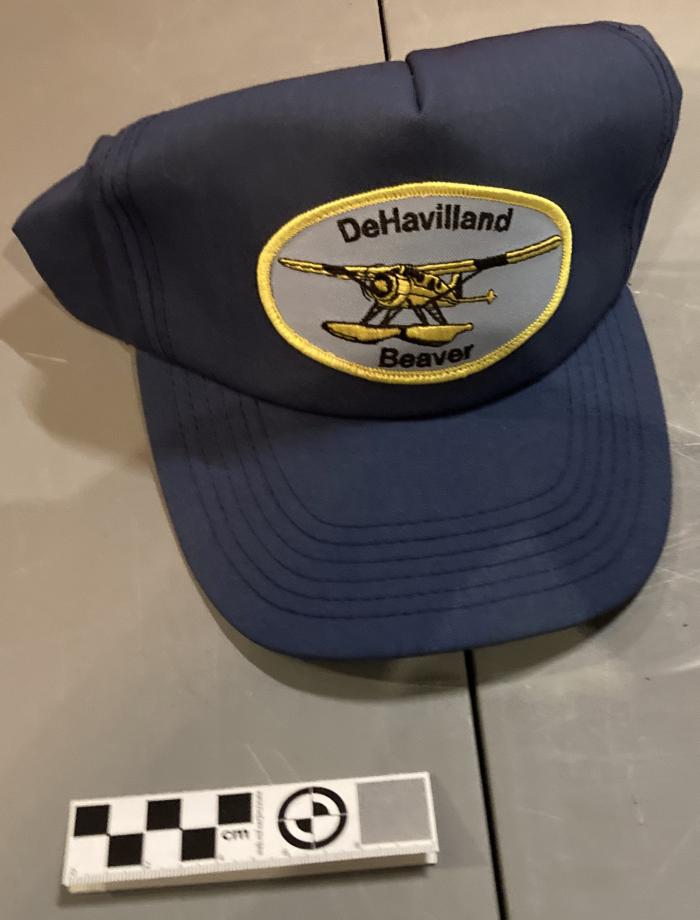Baseball Cap
Object
2024.4.28
Navy-blue baseball cap with a logo reading "DeHavilland Beaver" flanking a yellow floatplane across the front
The Beaver was designed and began production circa 1947 after De Havilland Canada decided to focus more on civilian-aircraft, a natural-seeming course following the Second World War’s conclusion. This decision yielded more-than-ideal results, leading to the Beaver’s birth and start of a new line of the world’s best-designed series of bush planes. Fittable with wheels, floats, or skis, the Beaver boasts a short distance required for take-off and landing, albeit with a small people-capacity for only about 6, after the two pilots. Highly manoeuvrable and with the ability to top-up the oil mid-flight as well, these made the plane perfect for outfitters, surveyors, mail-delivery, and even reconnaissance, as its record during the Korean War and Irish Troubles for the US and UK armed forces attest. Despite production ceasing in 1967 after over 1,600 models, hundreds remain in the air today, over half a century later! Aside from the Beaver’s utility and reliability, part of this can be attributed to Viking Air’s work in supplying licensed pieces for repairs or modifications. With such an illustrious history, it comes as no surprise that aviators made a hat commemorating the plane! The specifications for the Beaver are as follows:
Length: 30 ft 3 in (9.22 m)
Wingspan: 48 ft 0 in (14.63 m)
Height: 9 ft 0 in (2.74 m)
Empty weight: 3,000 lb (1,361 kg)
Gross weight: 5,100 lb (2,313 kg)
Fuel capacity: 79 imp gal (95 US gal; 360 L)
Engine: 1 × Pratt & Whitney R-985 Wasp Jr. 9 cylinder radial engine, 450 hp (340 kW)
Cruise speed: 143 mph (230 km/h, 124 kn) at 5,000 ft (1,500 m)
Range: 455 mi (732 km, 395 nmi)
Highest Altitude: 18,000 ft (5,500 m)
Take-off distance to 50 ft (15 m): 1,310 ft (399 m)
seaplane 1,980 ft (604 m)
Landing distance from 50 ft (15 m): 975 ft (297 m)
seaplane 1,510 ft (460 m)
Length: 30 ft 3 in (9.22 m)
Wingspan: 48 ft 0 in (14.63 m)
Height: 9 ft 0 in (2.74 m)
Empty weight: 3,000 lb (1,361 kg)
Gross weight: 5,100 lb (2,313 kg)
Fuel capacity: 79 imp gal (95 US gal; 360 L)
Engine: 1 × Pratt & Whitney R-985 Wasp Jr. 9 cylinder radial engine, 450 hp (340 kW)
Cruise speed: 143 mph (230 km/h, 124 kn) at 5,000 ft (1,500 m)
Range: 455 mi (732 km, 395 nmi)
Highest Altitude: 18,000 ft (5,500 m)
Take-off distance to 50 ft (15 m): 1,310 ft (399 m)
seaplane 1,980 ft (604 m)
Landing distance from 50 ft (15 m): 975 ft (297 m)
seaplane 1,510 ft (460 m)
